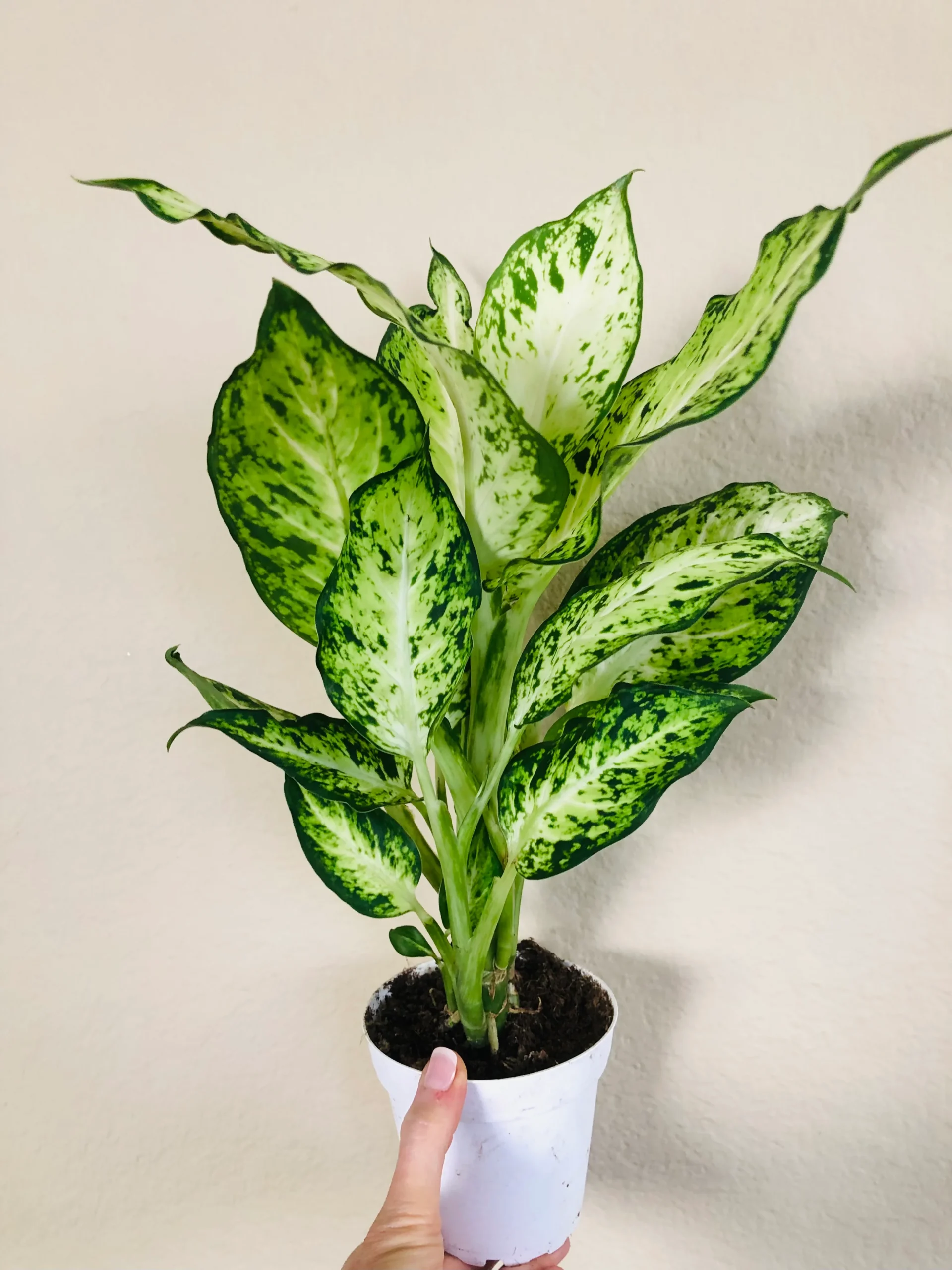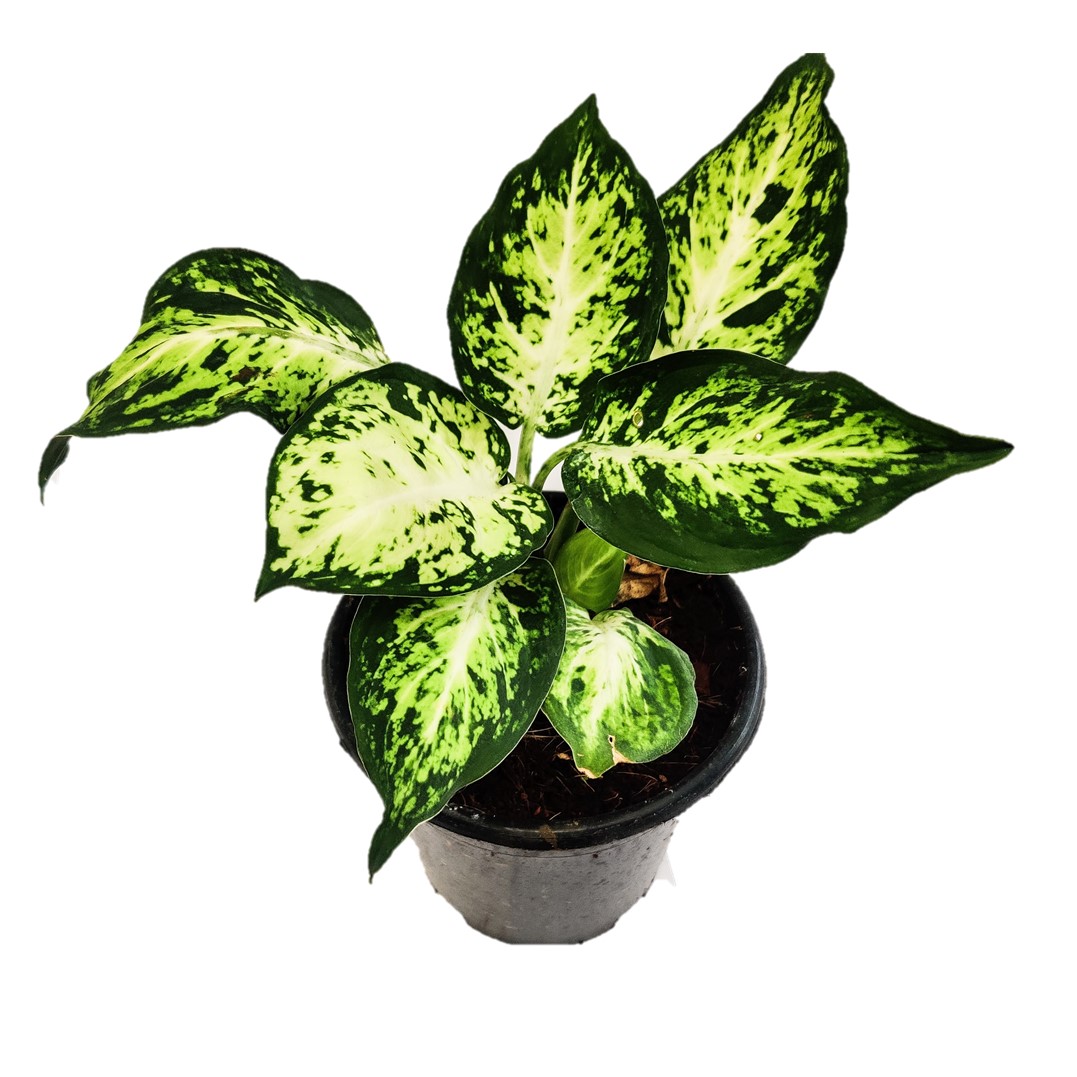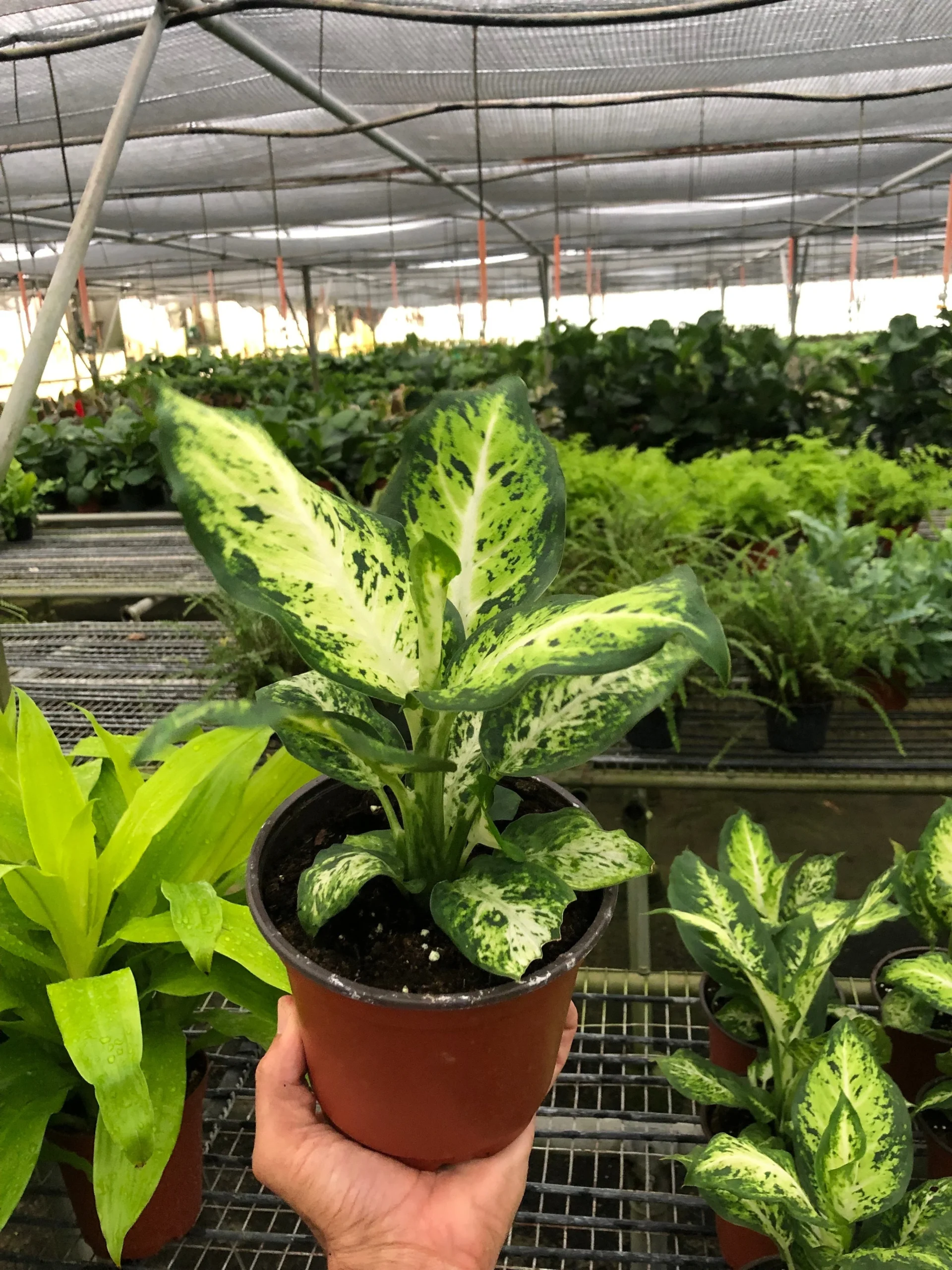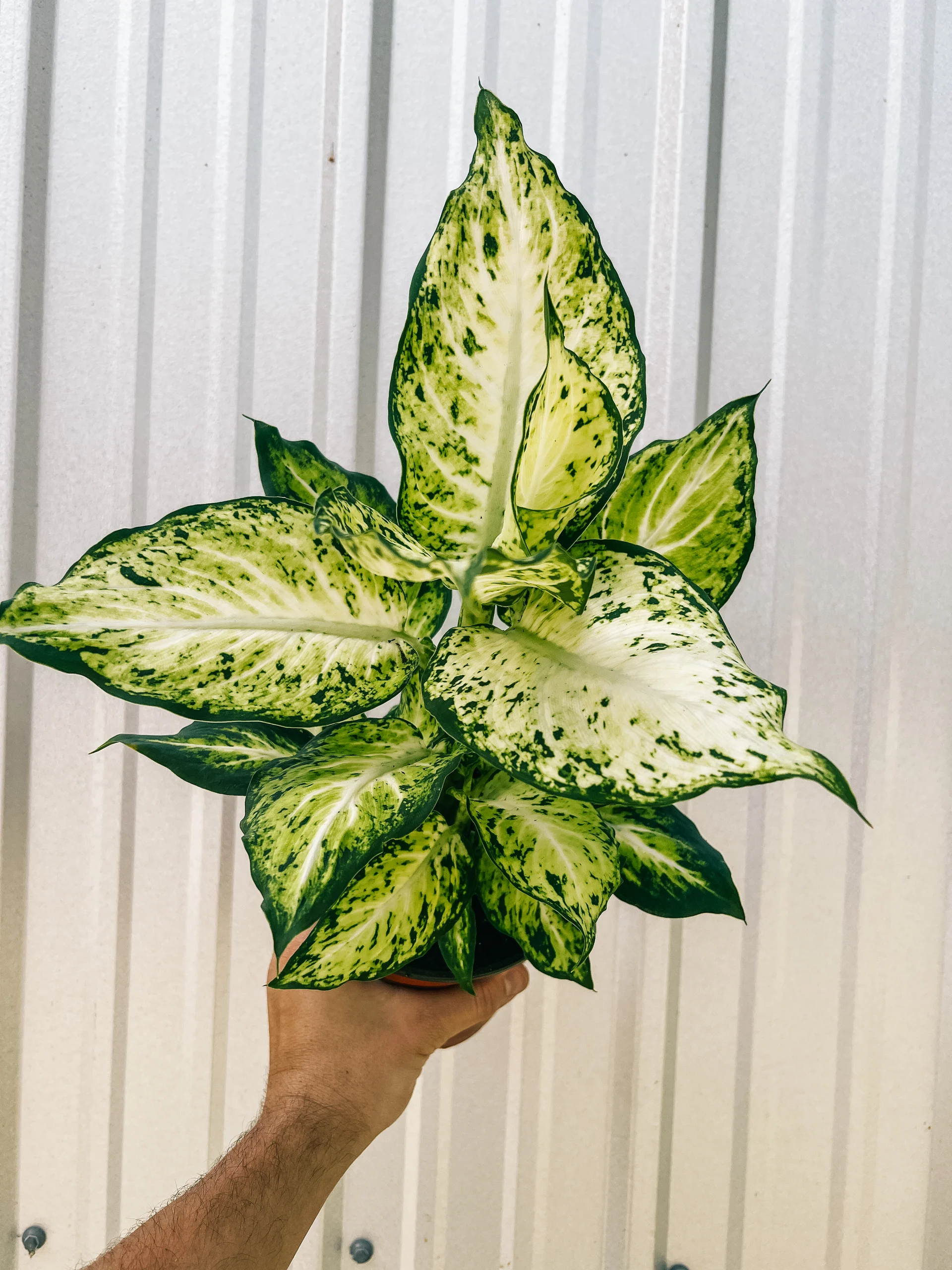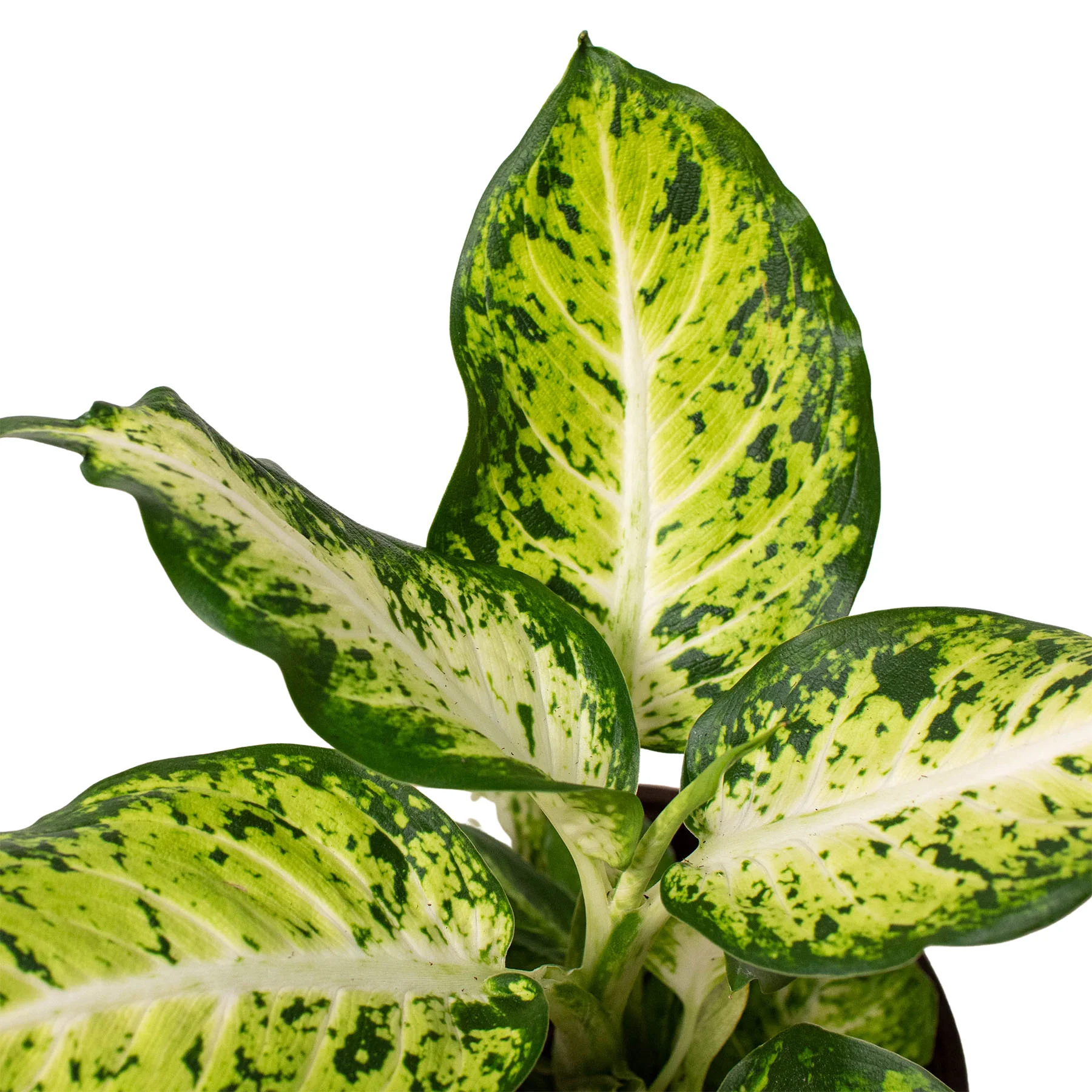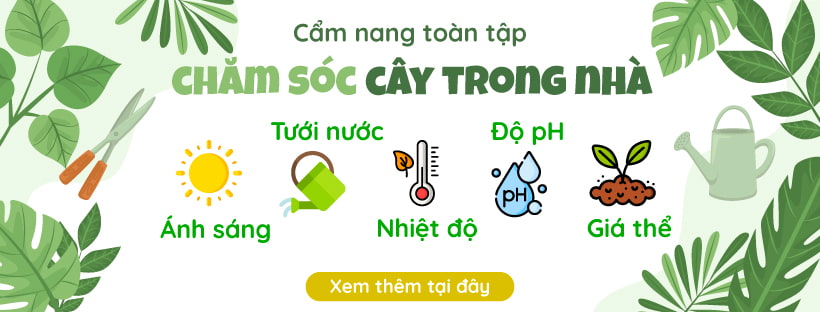Dieffenbachia Amy
| Surname | Araceae |
|---|---|
| Leaf color | xanh lá |
| Leaf shape | oval |
| Tăng trưởng | trung bình |
| Breeding | cuttings |
| Diseases & Pests | root rot, mealybug |
Dieffenbachia Amy has a delicate and luxurious beauty. The strong contrast between the dark leaf background and the prominent main vein creates an impressive visual effect, suitable for those who love a strong, individual style.
Note: The above information is only relative, the living conditions of the tree also depend a lot on other objective factors.
How to grow and care for Dieffenbachia Amy
Dieffenbachia Growing Difficulty Amy
Difficulty: 2-3/6
Dieffenbachia is a fairly easy plant to grow, suitable for beginners. However, there are a few points to keep in mind to keep the plant healthy:
✅ Sensitive to overwatering, very susceptible to root rot.
✅ Cannot withstand sudden cold temperatures.
✅ Leaves may burn if exposed to direct sunlight.
Soil for planting Dieffenbachia plant Amy
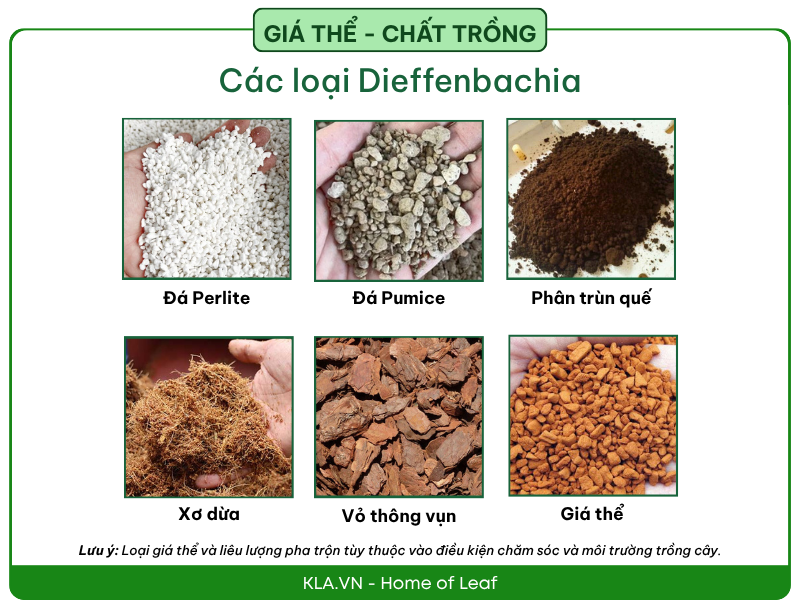
Dieffenbachia plants need soil Excellent drainage to avoid root rot but still retain moisture certain.
The ideal soil mix should be loose enough to allow the roots to have adequate air circulation.
📌Popular Dieffenbachia Soil Formula:
✅ 2 Growing medium for indoor plants (potting mix)
✅ 1 part perlite or pumice (helps drain water and ventilate)
✅ 1 part coconut fiber or shredded pine bark (moisturizing, creating fluffiness)
✅ (Optional) some charcoal or vermicompost (supplemented with beneficial microorganisms and nutrients)
🚫 Avoid using pure garden soil Because the soil is easily compacted, retaining water for too long, causing the Dieffenbachia roots to suffocate and rot.
💡 Note:
- If you are growing Dieffenbachia in pots, make sure has large drain holes under the basin.
- Fertilizer slow release fertilizer or organic fertilizer (worm castings, fish manure) periodically every 4-6 weeks during the growing season (spring, summer). Reduce or stop fertilizing in winter.
Suitable light for plants Dieffenbachia Amy
![]()
🔆 Indirect light, medium to strong (Bright, Indirect Light) is the best!
📌 Lighting details:
✅ Best: Place near a window with curtains, where there is plenty of light but no direct sunlight.
✅ Can withstand: Low light, but the plant may grow slowly, the leaves lose their characteristic pattern and the stem becomes long and weak.
✅Avoid: Strong direct sunlight (especially midday and afternoon), as this can burn the leaves, causing dry brown spots.
💡 Note:
- If the leaf patterns fade, it is a sign that the plant needs more light.
- If placed in a dark room, you can use LED plant lights (grow light) specialized, placed about 30-60cm away from the plant and exposed to light for 10-12 hours/day to support photosynthesis.
📍 Ideal location in the house:
- Near the window Winter to welcome the gentle morning sunshine.
- If the window faces West or South, it is necessary to leave a distance of 1-2m from the window or have a curtain to filter strong light.
Suitable temperature for Dieffenbachia Amy plant
🌿 Ideal temperature for Dieffenbachia: 18 - 27°C
Dieffenbachia plants prefer warm climates, stable temperatures and very sensitive to sudden change in temperature.
📌 Notes to keep plants healthy:
✅ Avoid drafts and direct air conditioning because it will cause the plant to go into heat shock and dry the leaves.
✅ Do not leave plants outdoors. if night temperature drops below 15°C.
📍Signs of plants affected by temperature:
🚫 Too cold: The leaves turn yellow, become soft and fall off. The plant stops growing.
🚫 Overheating: Leaves wilt even when the soil is still moist, and leaf edges may dry out and scorch.
Water for plants Dieffenbachia Amy
![]() Watering When the topsoil layer about 2-5cm thick is completely dry.
Watering When the topsoil layer about 2-5cm thick is completely dry.
📌 Watering principles:
✅ Water slowly until water begins to drain out of the drainage hole at the bottom of the pot. This ensures that the entire root system is hydrated.
✅ Always use your fingers or a wooden stick to check soil moisture instead of watering on a fixed schedule.
✅ Reduce watering in winter when the plant enters a resting phase and grows less
🚫 Avoid over watering, because it can easily cause waterlogging and death of the plant. The signs are that the leaves at the base turn yellow, the stem is soft and has an unpleasant smell.
📍How many times a week to water?
- Hot season/growing season: 1/week.
- Cold season/holiday season: 10-14 days/time.
Humidity for Dieffenbachia Amy
![]() Dieffenbachia grows well in an environment with medium to high humidity (about 50 - 70%)However, most popular varieties can adapt to normal indoor humidity. If the air is too dry (especially in an air-conditioned room), the leaf edges may turn brown and dry out.
Dieffenbachia grows well in an environment with medium to high humidity (about 50 - 70%)However, most popular varieties can adapt to normal indoor humidity. If the air is too dry (especially in an air-conditioned room), the leaf edges may turn brown and dry out.
📌 How to maintain proper humidity:
✅ Use a humidifier.
✅ Place the pot on a tray of pebbles with water. (make sure the bottom of the pot is not submerged in water) to increase the surrounding humidity.
✅ Group planting Let them create a natural humid environment around themselves.
✅ Place plants in the bathroom or kitchen if there is enough light
Ideal pH for Dieffenbachia Amy
Dieffenbachia plants grow best in soil with a pH slightly acidic to neutral (6.0 - 7.5).
🌿 If the soil pH is too low (below 5.0), plants may have difficulty absorbing certain nutrients.
🌱 If the pH is too high (above 7.0), the plant may lack micronutrients, leading to yellow leaves.
Pet-friendly
![]()
Dieffenbachia (Dieffenbachia) is not friendly to pets (dogs, cats) and humans. If you plant the plant, you need to take careful measures to protect the plant. 🚧🐕🐈
💡 Additional notes:
💡 Wipe leaves: The large leaf surface of the plant easily collects dust, hindering photosynthesis. Use a damp cloth to gently wipe 1-2 times/month to keep the leaves clean and shiny.
💡 Rotate the pot: Dieffenbachia tends to grow towards light sources, so you should rotate pot 90 degrees periodic per week for balanced plant growth.
💡 Pests and diseases: Watch for mealybugs and spider mites on the underside of leaves. If you see them, wipe the leaves with a diluted soap solution or neem oil.
💡 Breeding: Can be propagated by stem cuttings (about 5-10cm long, with at least one dormant bud) into water or moist soil.
💡 Repotting: Just repot when the roots have filled the old pot (usually 1-2 years/time). You should choose a new pot that is 2-4cm larger in diameter than the old pot.
Indoor Plant Care Guide
The most important and basic knowledge about growing plants indoors:


